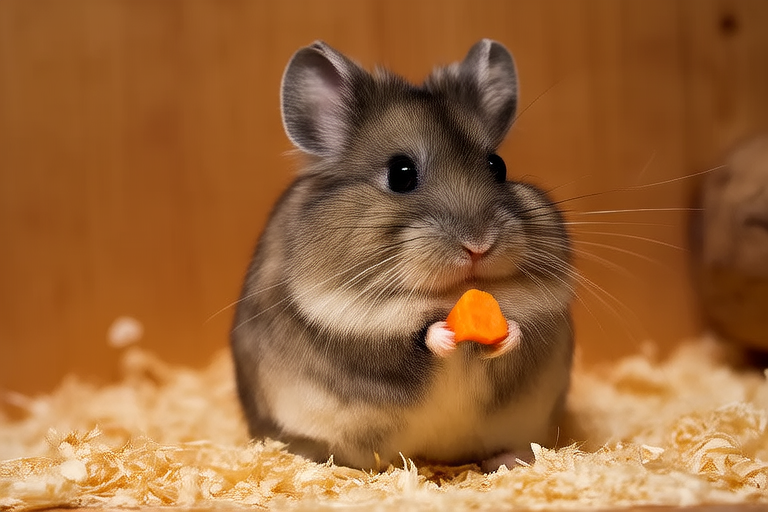Chinchillas Unveiled: Everything You Need to Know Before Adopting
Welcome to the fascinating world of chinchillas! These small, fluffy creatures are native to the Andes Mountains in South America and have become popular pets for their charming personalities and unique characteristics. Before you decide to bring a chinchilla into your home, it’s essential to understand their specific needs and behaviors. This guide will provide you with all the information you need to make an informed decision about adopting a chinchilla.
An Introduction to Chinchillas
Chinchillas are small rodents known for their soft, dense fur, which can be up to 60 times softer than human hair. They come in various colors, including standard gray, beige, white, and black velvet. Originally from high-altitude regions, they thrive in cooler temperatures and are nocturnal animals, meaning they are most active during the night. Their long tails serve as a counterbalance when they jump and help regulate body temperature.
Unique Characteristics
One of the most remarkable features of chinchillas is their dust bathing habit. Unlike other animals that bathe in water, chinchillas clean themselves by rolling in fine volcanic ash or specially formulated dust. This process helps them maintain their luxurious fur and remove any dirt or oils. Another distinctive trait is their ability to jump impressive distances; some chinchillas have been observed leaping up to six feet in a single bound.
Care Requirements
Chinchillas require specific care to ensure their health and happiness. Firstly, they need a spacious cage with multiple levels to encourage climbing and jumping. The cage should be lined with a solid surface to prevent injuries from falling debris. Additionally, provide plenty of toys and chew items to keep them mentally stimulated and prevent boredom.
Dietary Needs
A balanced diet is crucial for maintaining a chinchilla’s health. Their primary food source should be high-quality commercial chinchilla pellets, supplemented with hay such as timothy grass. Fresh vegetables like carrots, broccoli, and leafy greens can also be offered but in moderation. Avoid feeding them fruits, sugary treats, or foods high in fat and sugar. Always ensure fresh water is available, preferably through a sipper bottle designed for small animals.
Housing Recommendations
When setting up your chinchilla’s living space, consider the following:
- Size: A minimum of 3 square feet per chinchilla is recommended, with additional space if housing multiple chinchillas together.
- Location: Place the cage in a quiet area away from direct sunlight and drafts.
- Temperature: Maintain a cool environment between 60-70°F (15-21°C) to prevent heat stress.
- Furnishings: Include ramps, platforms, and tunnels to encourage exercise and exploration.
Common Health Issues
Like any pet, chinchillas can face certain health challenges. Regular veterinary check-ups are vital to catch potential problems early. Common issues include dental problems, respiratory infections, and digestive disorders. Signs of illness may include lethargy, loss of appetite, or changes in bathroom habits. Early intervention is key to effective treatment.
Tips for Handling
Handling your chinchilla gently and regularly helps build trust and strengthens your bond. Start by offering treats to encourage interaction. Once comfortable, gently scoop them up, supporting their hindquarters with one hand and placing the other under their chest. Always supervise interactions with children to ensure the safety of both the child and the chinchilla.
Behavior and Social Needs
Chinchillas are generally solitary animals in the wild, but many domesticated pairs can live harmoniously together. However, introducing new chinchillas requires careful planning to avoid aggression. Providing ample space and resources can minimize competition. Understanding their natural behaviors, such as territorial marking and vocalizations, allows you to better interpret their needs and emotions.
Where and How to Adopt a Chinchilla
Adopting a chinchilla from a reputable breeder or rescue organization ensures you’re bringing home a healthy, well-socialized animal. Breeders often provide detailed information about the chinchilla’s lineage and care history. Rescue organizations offer another avenue for finding a loving companion, especially if you’re interested in giving a second chance to an older or special-needs chinchilla.
Before finalizing the adoption, take time to observe the chinchilla’s behavior and interact with them. Ensure the breeder or rescue provides all necessary documentation, including health records and vaccination history. Finally, prepare your home by setting up the appropriate living space and gathering supplies before bringing your new pet home.
Conclusion
Bringing a chinchilla into your family is a rewarding experience filled with joy and companionship. By understanding their unique needs and providing proper care, you can ensure a happy and healthy life for your new furry friend. Remember, adopting a chinchilla is a long-term commitment that requires dedication and love. With the right knowledge and preparation, you’ll create a wonderful home for your new pet.
